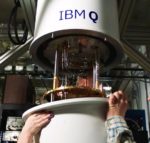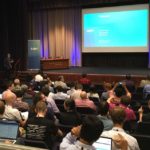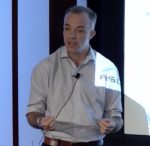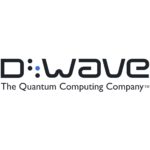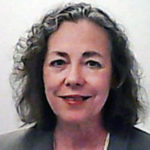Candace Culhane, a program/project director in Los Alamos National Laboratory’s Directorate for Simulation and Computation, has been selected as the general chair for the 2022 SC Conference (SC22). “We are thrilled to announce that Candy Culhane is the SC22 General Chair. She brings to the conference her deep knowledge and practical experience in working with the high-performance computing industry sector, national laboratories, and supercomputer centers,” said Michela Taufer, the Jack Dongarra Professor at the University of Tennessee Knoxville and SC Steering Committee chair.
Los Alamos National Laboratory joins IBM Q Network for quantum computing
Today Los Alamos National Laboratory announced that it is joining the cloud-based IBM Q Network as part of the Laboratory’s research initiative into quantum computing, including developing quantum computing algorithms, conducting research in quantum simulations, and developing education tools. “Joining the IBM Q Network will greatly help our research efforts in several directions, including developing and testing near-term quantum algorithms and formulating strategies for mitigating errors on quantum computers,” said Irene Qualters, associate laboratory director for Simulation and Computation at Los Alamos.
Department of Energy to Showcase World-Leading Science at SC19
The DOE’s national laboratories will be showcased at SC19 next week in Denver, CO. “Computational scientists from DOE laboratories have been involved in the conference since it began in 1988 and this year’s event is no different. Experts from the 17 national laboratories will be sharing a booth featuring speakers, presentations, demonstrations, discussions, and simulations. DOE booth #925 will also feature a display of high performance computing artifacts from past, present and future systems. Lab experts will also contribute to the SC19 conference program by leading tutorials, presenting technical papers, speaking at workshops, leading birds-of-a-feather discussions, and sharing ideas in panel discussions.”
NNSA Explorations: ARM for Supercomputing
Howard Pritchard from LANL and Simon Hammond from Sandia gave this talk at the Argonne Training Program on Extreme-Scale Computing 2019. “Sandia National Laboratories has been an active partner in leveraging our Arm-based platform since its early design, and featuring it in the deployment of the world’s largest Arm-based supercomputer, is a strategic investment for the DOE and the industry as a whole as we race toward achieving exascale computing.”
LANL teams with Arm for Extreme-scale Computing
Los Alamos National Laboratory and Arm are teaming up to make efficient, workload-optimized processors tailored to the extreme-scale computing requirements of the Laboratory’s national-security mission. The collaboration addresses the challenges of connecting more and more processors as high performance computers become larger and more powerful. “This close collaboration with EMC3, is expected to start bearing performance results in near term systems as well some of our future systems in design,” said Gary Grider, division leader for HPC at Los Alamos National Laboratory.
LANL to Acquire Next-Gen D-Wave Quantum Computer with Lower Noise
Today D-Wave Systems announced that Los Alamos National Laboratory has signed a contract to upgrade to the company’s next-generation “Advantage” quantum system. Available in 2020, the Advantage platform will deliver significant performance gains and greater solution precision. “With the Advantage quantum system, we are building the first ever quantum computer designed to deliver business benefit.”
Epic HPC Road Trip leads to Gary Grider at Los Alamos
In this special guest feature, Dan Olds from OrionX continues his Epic HPC Road Trip series with a stop at LANL in new Mexico. “Our conversation started with the open question: where do you see HPC going? He’s not wild about the fact that today’s machines are still being designed for dense matrix type problems along the lines of LINPACK rather than the sparse matrix problems that are much more prevalent today.”
Podcast: Irene Qualters from LANL Shares Life Lessons on HPC and Diversity
In this Big Compute Podcast episode Gabriel Broner interviews Irene Qualters about her career and the evolution of HPC. “Some of the most profound advances that I have seen come from groups of people that have very different perspectives, very different ideas. We have to struggle to collectively bring our different disciplines on our world’s hardest problems, on the world’s most challenging problems.”
New HeSpaDDA Algorithm Distributes Parallel Workloads on LANL Supercomputers
Researchers at Los Alamos National Lab have developed new software to distribute computation more efficiently and across increasing numbers of supercomputer processors. This new decomposition approach for molecular dynamics simulation is called the heterogeneous spatial domain decomposition algorithm, or HeSpaDDA. “In a nutshell, the proposed algorithm will make use of a priori knowledge of the system setup. Specifically, the region which is computationally less expensive.”


